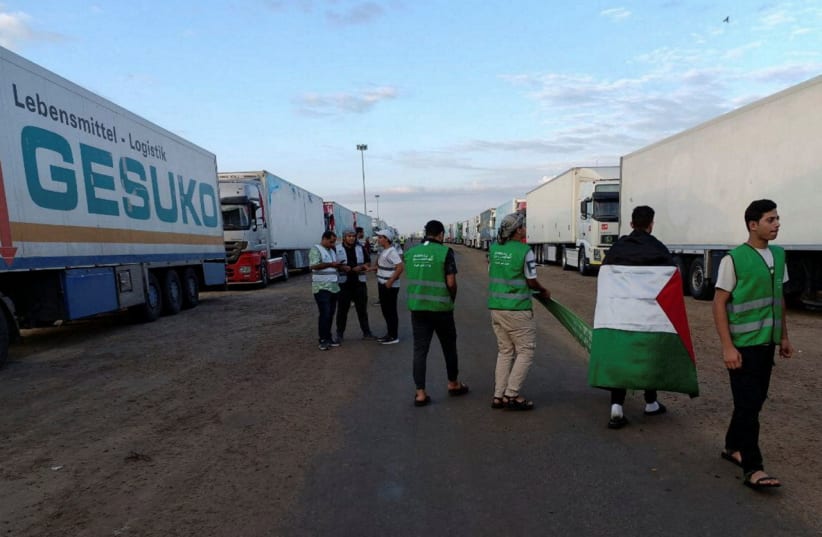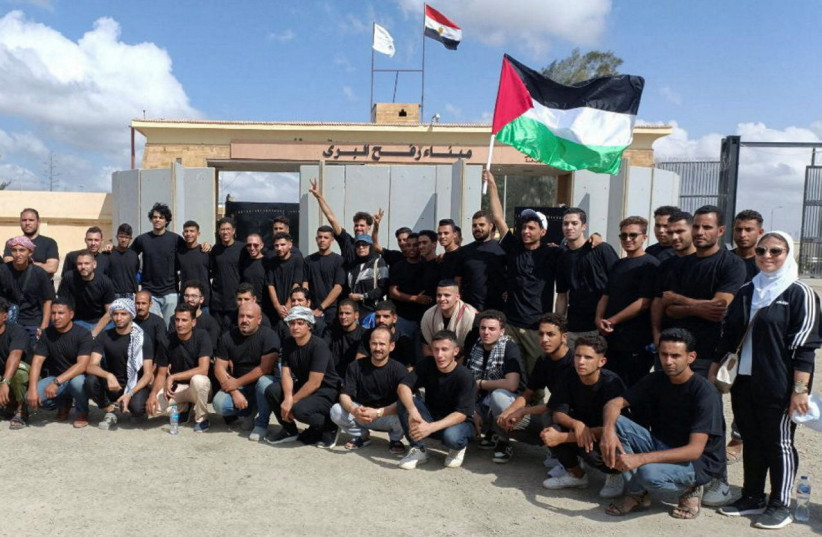War is fluid.
For that reason, those leading the war effort -- both politicians and generals -- need to weigh their pronouncements carefully since what may be true one day may not hold the next after circumstances change.
Or, as it says in the book of Ecclesiastes (5:4), “It is better not to vow at all than to vow and not to fulfill.”
The government’s decision over the weekend to allow some 70,000 liters of fuel into Gaza a day is a case in point. While this amount of fuel, amounting to 490,000 liters a week, is just a fraction of the 6.8 million liters of fuel entering Gaza on a weekly basis before the war, it is much more than Israel said it would allow into the area up until two weeks ago.
On October 9, just two days after the worst atrocities committed against the Jewish people since the Holocaust, Defense Minister Yoav Gallant -- justifiably full of tremendous rage -- said he ordered a complete siege of the Gaza Strip. “There will be no electricity, no food, no fuel, everything is closed.”
On October 12, Energy Minister Israel Katz said in response to calls for humanitarian aid to Gaza that “no electrical switch will be turned on, no water valve will be opened, and no fuel truck will enter - until the Israeli hostages are returned home. Humanitarian gestures for humanitarian gestures, and no one will preach to us.”
Allowing aid into Gaza
On October 21, following intense pressure from the US administration and other countries, Israel began allowing humanitarian aid -- including food and water -- into Gaza from Egypt.
But not fuel, viewed as critical to Hamas's war efforts.
On November 3, Prime Minister Benjamin Netanyahu said he told visiting US Secretary of State Antony Blinken that “There will be no entry of gasoline or cease-fire without the release of our hostages.” Then, four days later, he repeated the same message in a televised statement to the nation.
Yet here we are, some two-weeks later, and trucks laden with fuel began rolling into Gaza for UNRWA to run water desalination stations, sewage pumps, and power for hospitals and bakeries. The fuel is ostensibly for humanitarian needs only, but there is little guarantee that it will not find its way into Hamas's hands.
Nevertheless, Netanyahu defended this flip-flop on this matter during his press conference on Saturday night, saying that the amount of fuel allowed in is only a “minimal emergency quality of fuel” needed to operate water and sewage pumps and that without this, there would be a danger of a breakout of epidemics that would afflict not only Gaza residents but also IDF soldiers and, through them, other Israeli citizens.
He argued that this move was necessary to ensure Israel retains international legitimacy to wage this war.
And he may very well be right. Israel needs time to achieve its aim of dismantling Hamas's political and military infrastructure and capabilities inside Gaza, and it is quite plausible that this indeed is a small price to pay to get the US to extend Israel more time to do just that.
That is not the issue. The issue is not that political and military leaders will have to adjust tactics as the situation changes during a war -- something both legitimate and expected. There is nothing wrong with that.
Crossing the redline
But knowing in advance that this is the case, knowing in advance that situations change rapidly in war, political and military leaders must be careful about what they say, what redlines they set, and what goals they establish.
For nearly a month, Israel’s redline was that no fuel would enter Gaza unless the hostages were released (the maximalist position) or at least until some humanitarian gesture was made toward the hostages, such as an elementary visit to them by Red Cross officials or even a list of their names (the minimalist position).
That redline was deemed justifiable by most Israelis. Yet, on Sunday, Israel crossed its own redline.
The problem with Israel crossing its own redline is that it radiates weakness. It radiates a sense that if one pressures Israel hard enough, long enough and at the right points, then Israel will bend. That is not a perception a country wants to flourish during a war.
It is better not to have set a redline, rather than to have not set one and then crossed it. Or, harking back to Ecclesiastes, “It is better not to vow at all than to vow and not to fulfill.”

